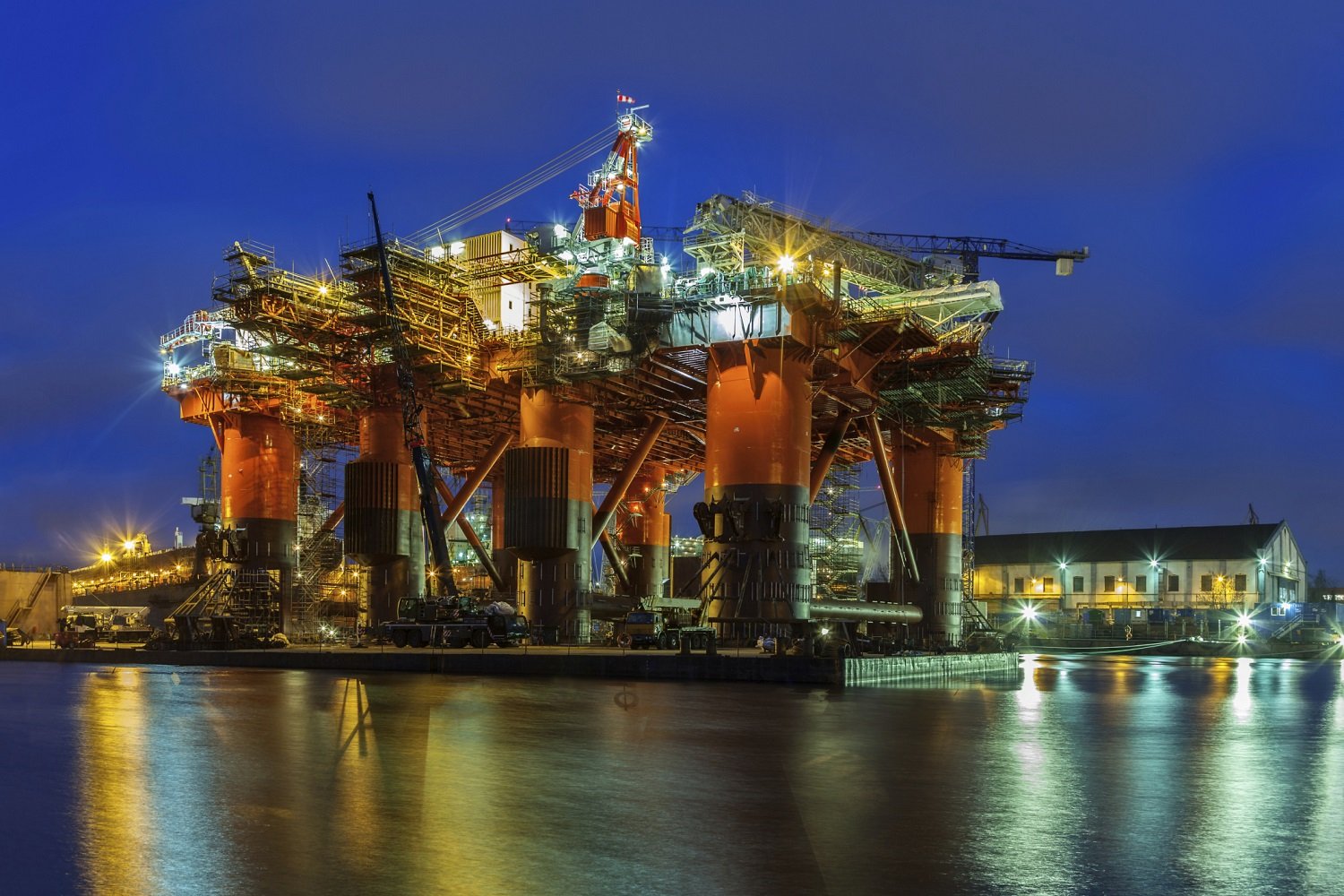Image Source: Seadrill.
Seadrill Ltd (SDRL +0.00%) reported fourth-quarter and full-year 2015 earnings on February 25th, and there really weren't any surprises. The story for Seadrill, as well as fellow offshore drillers including Transocean LTD (RIG +2.66%) and ENSCO PLC (ESV +0.00%) -- which also reported earnings in recent days -- is more about what the future looks like.
Frankly, it could be kinda ugly if demand for offshore work doesn't start rebounding in coming quarters. Let's take a closer look at Seadrill's financial and operating results, as well as the company's guidance for 2016, and how the offshore drilling environment is shaking out as the downturn continues.
The numbers
Fourth quarter:
| Metric | Q4 2015 | Q4 2014 | Change |
|---|---|---|---|
| Revenue | $959 | $1,261 | -23.9% |
| Net income | $279 | $150 | 86% |
| EPS | $0.58 | $0.32 | 81% |
Revenue and net income in millions. Source: Seadrill.
Full-year:
| Metric | 2015 | 2014 | Change |
|---|---|---|---|
| Revenue | $440,804 | $391,660 | 12.5% |
| Net income | -$750 | $4,087 | -118.4% |
| EPS | -$1.49 | $8.30 | -118% |
| Backlog | $10,700 | $17,200 | -38% |
Revenue, net income, and backlog in millions. Source: Seadrill.
Transocean reported $1.85 billion in revenue, up sequentially, but down from $2.24 billion a year ago, and earnings per share of $1.66 compared to a per-share loss of $2.04 one year ago. Transocean's backlog was $15.5 billion, down from $21.2 billion one year ago, and $16.9 billion at the end of Q3.
ENSCO also announced fourth-quarter earnings recently, taking $2.9 billion in non-cash asset and goodwill impairments in its fourth quarter. From an operating perspective (removing the impact of those non-cash impairments), ENSCO saw its revenues fall to $828 million from $1.2 billion one year ago, and operating income of $1.7 billion, down from $2.1 billion a year ago.
All three continue to build up their balance sheets. Seadrill carries $1.04 billion in cash, while Transocean has $2.3 billion, and ENSCO has $1.3 billion in cash and short-term investments.
What happened in the quarter
Seadrill delivered relatively solid results on the back of the Seadrill group's (which includes subsidiaries and partially owned ventures) multi-billion-dollar contract backlog.
Balance sheet changes:
- Long-term debt (both direct and related party) declined to $10.9 billion at Q4 end, down sequentially from $11.4 billion at Q3 end.
- Cash on the balance sheet was $1.04 billion, down sequentially from $1.18 billion.
- Current long-term debt (meaning due in the next 12 months) is $1.49 billion, down sequentially from $1.65 billion.
- Seadrill's direct backlog (excluding subsidiary and partially owned venture backlog) was $5.1 billion, down sequentially from $5.98 billion.
- The average contract duration also slipped, from 21 and 15 months, respectively, for floaters and jack-ups to 18 and 13 months, respectively, reflecting the almost nonexistent new contract activity in offshore drilling.
Operating improvements:
- Seadrill achieved $382 million cash savings in 2016 based on a combination of cost reduction and postponement of some spending.
- Reduced headcount from idled vessels was a major factor as the offshore headcount was 24% lower to start 2016 than it was in 2015.
- Reduced headcount and drilling activity also other lower SG&A costs, such as insurance, travel, and others.
- The company is also able to defer significant maintenance and capital investments on those idled vessels until they return to service.
- The company says 25% of the reductions will be recurring cost savings, while 35% were deferred capex and maintenance costs on idle vessels that will return when those vessels go back to work. The remaining 40% is tied to the deferred newbuild expenses, both shipyard payments, and operating costs tied to preparation of those vessels for service.
Market and fleet update:
- Contracting activity for offshore drilling has continued to fall since 2014, and is now at the lowest levels the industry has seen in 30 years. Furthermore, there is consensus that spending offshore will decline even further in 2016.
- Seadrill's backlog is substantial enough and secure enough that it should support the company's operations for the remainder of 2016, and at least partly into 2017. However, things would get very rough if activity doesn't pick up before then.
- As things stand today, Seadrill, Seadrill Partners (SDLP +0.00%), and Seamex own 54 active vessels, and 11 of them are currently idle. There are another six with contracts expiring in 2016.
- Seadrill reached agreement in January to delay delivery of two ultra-deepwater drillships from 2016 to 2018.
- Seadrill has six jack-ups and two semi-submersible newbuilds scheduled for delivery in 2016. Management said that it will not accept any newbuilds in 2016, and is working with shipbuilders on deferrals of delivery.
Looking ahead
While Seadrill and its peers mentioned above all have fairly robust backlogs and enough cash to address short-term debt maturities, Seadrill seems to have worked past the risk of having to pay for newbuilds in 2016. However, the risk for offshore is this: How long will it take for oil to recover?
The trick with offshore drilling is that it's likely to be the last sector to bounce back. Not only is offshore drilling expensive, but it's also a longer payback than most onshore drilling activities. And it's because of this that it could be well into 2017 before the oil companies that contract companies like Seadrill start investing in offshore development in a big way.
Don't get me wrong -- that's not a death sentence for Seadrill, or any of its peers. But it's a word of warning: Seadrill may look like it's in good shape, between cutting costs in 2015 and its relatively solid backlog; but as things stand today, new offshore drilling activity is at a near standstill. Things could get worse before they get better.






